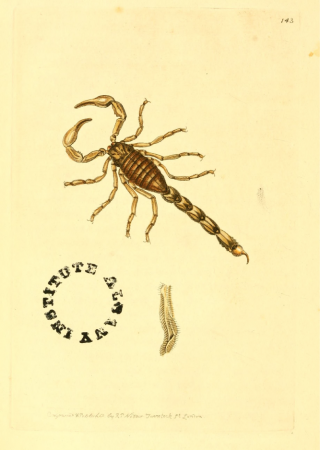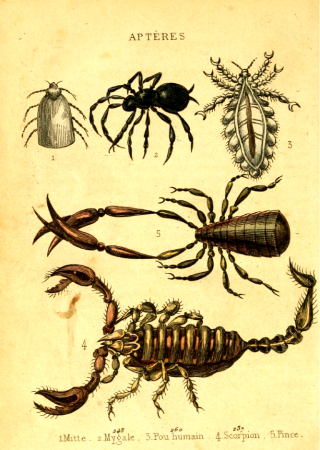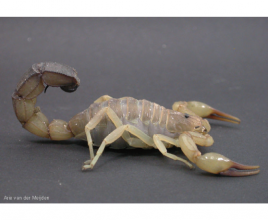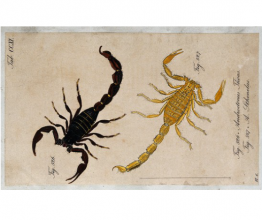N. African desert scorpion
Androctonus australis
Did you know that… ?
- ...you can encounter the most poisonous scorpion in the world at the renowned Djerba airport in Tunisia?
- ...like a praying mantis, the female of the desert scorpion sometimes eats the male after mating?
- ...young scorpions, which can be up to fifty in one litter, are born serially and use suction cups on the ends of their legs to hold on to their mother's back?
- ...even this most poisonous scorpion in the world is often kept in terrariums as a pet?
- ...in earlier times, the cure for a scorpion sting consisted of a paste made of freshly ground-up scorpions, applied to the sting site?
- ...the desert scorpion can live up to 18 years?
- ...the desert scorpion is a close relative of spiders and ticks?
Practical info
Basic information:
Phylum - Arthropoda
Class - Arachnida
Maximum length - 13 cm
Eats - insects
Habitat - northern Africa, the near East, India
Type of poison - neurotoxin
Distinguishing marks:
The first pair of legs are mandibles, the second pair is metamorphosed into small pincers, the remaining four pairs are for locomotion. The body is segmented, of which the last five are narrowed into a "tail". The end of the body carries a poison sac with a stinger. Color is sandy yellow.
Characteristics and poison
The desert scorpion is most active at night. During the day it hides under rocks or in burrows, which it digs itself. It feeds on various insects. The venom of this scorpion is most dangerous for pre-school-age children or older and ailing people. The most common symptoms are swelling around the sting area, pain and numb extremities. If the poison gets into the bloodstream, it can cause stomachaches, dry throat, irritation, uncoordinated movements, vomiting, incontinence, excessive salivation, sweating and problems breathing. Death in an adult comes after several days, as a consequence of paralysis of the breathing muscles.




